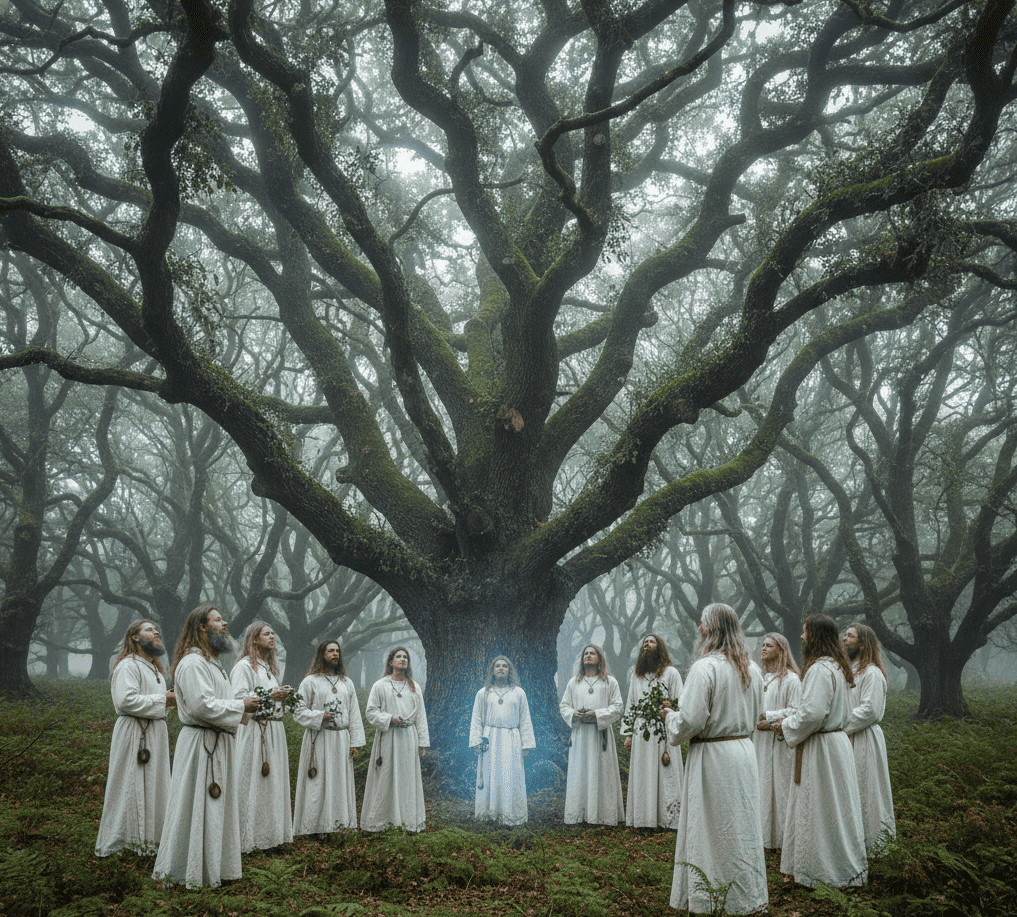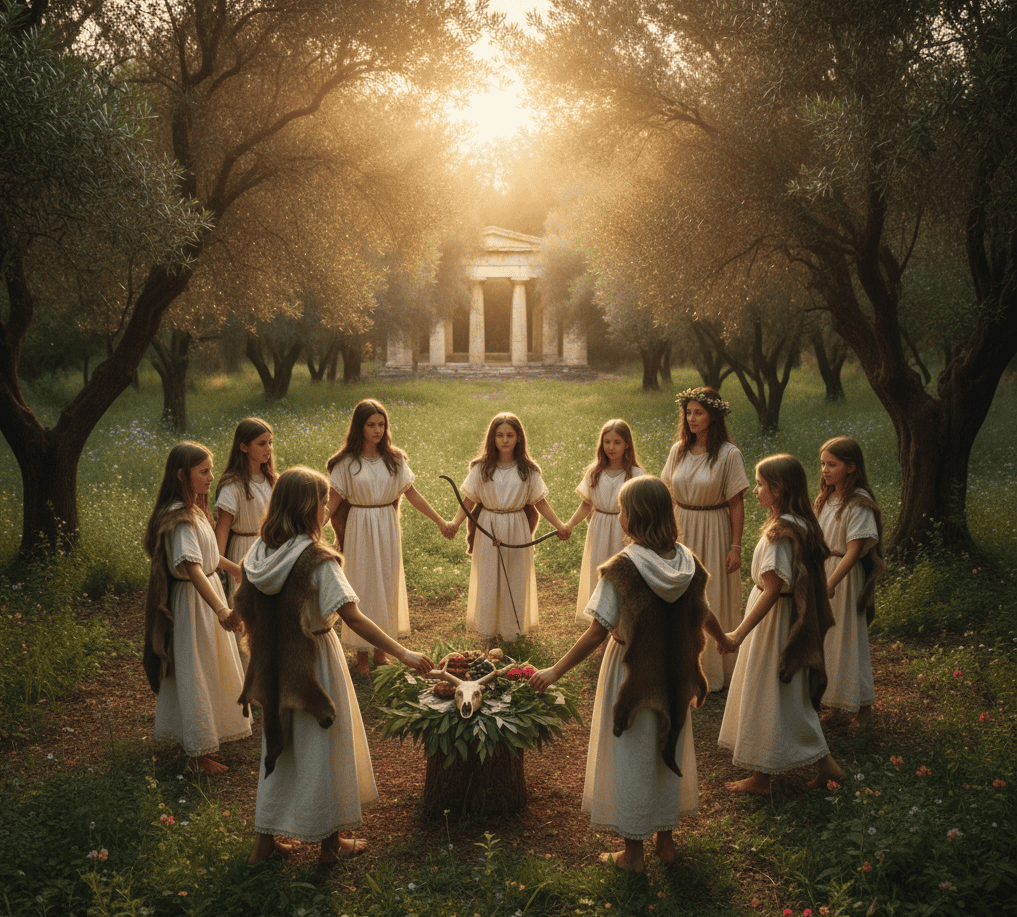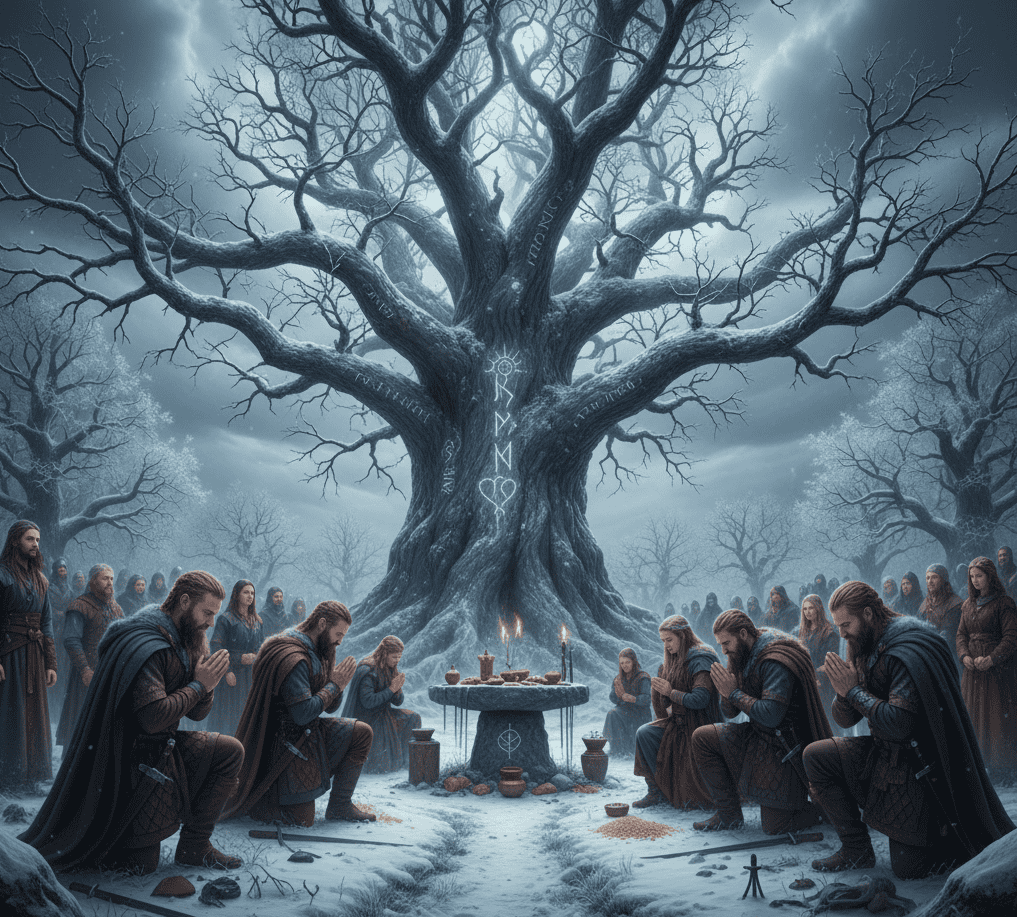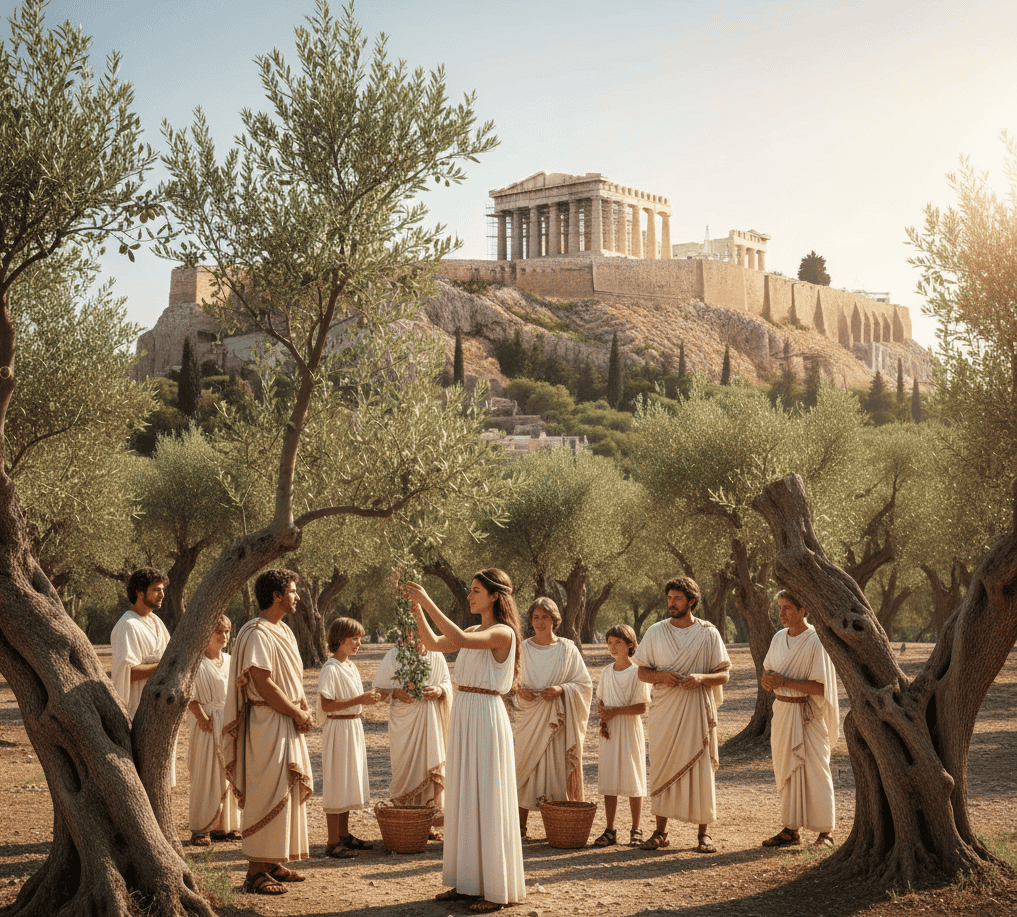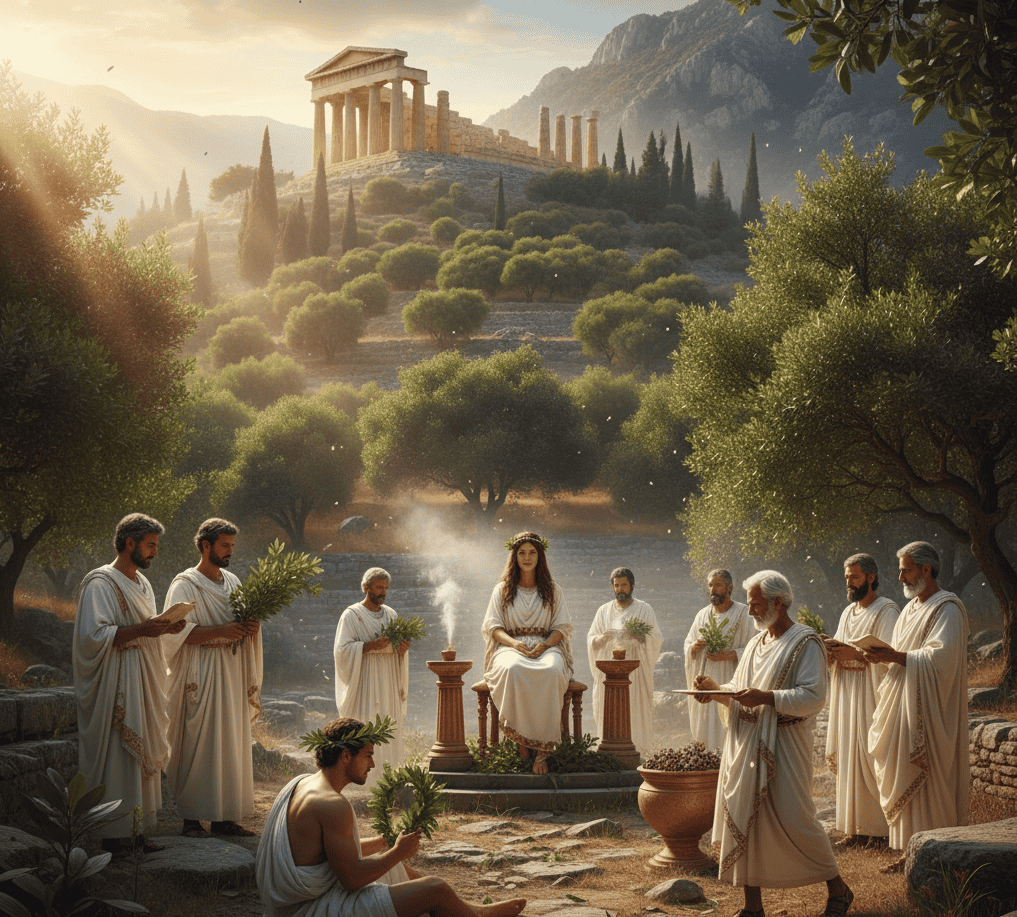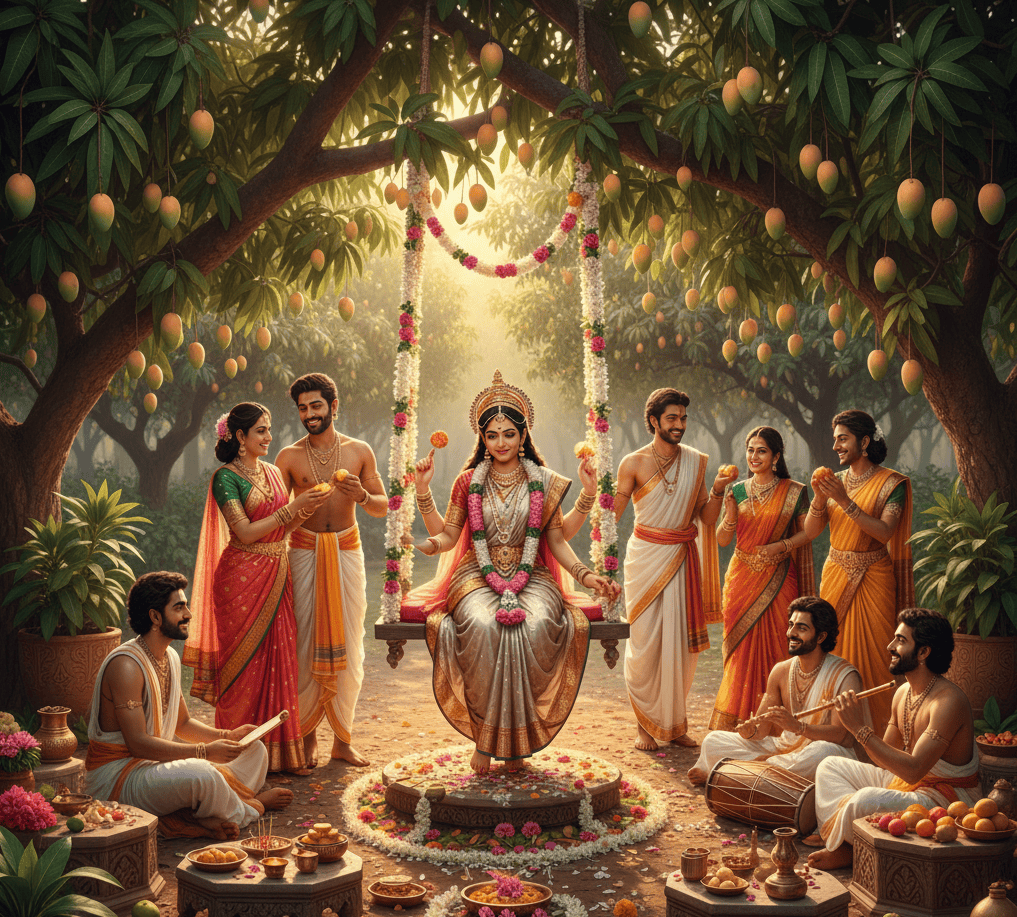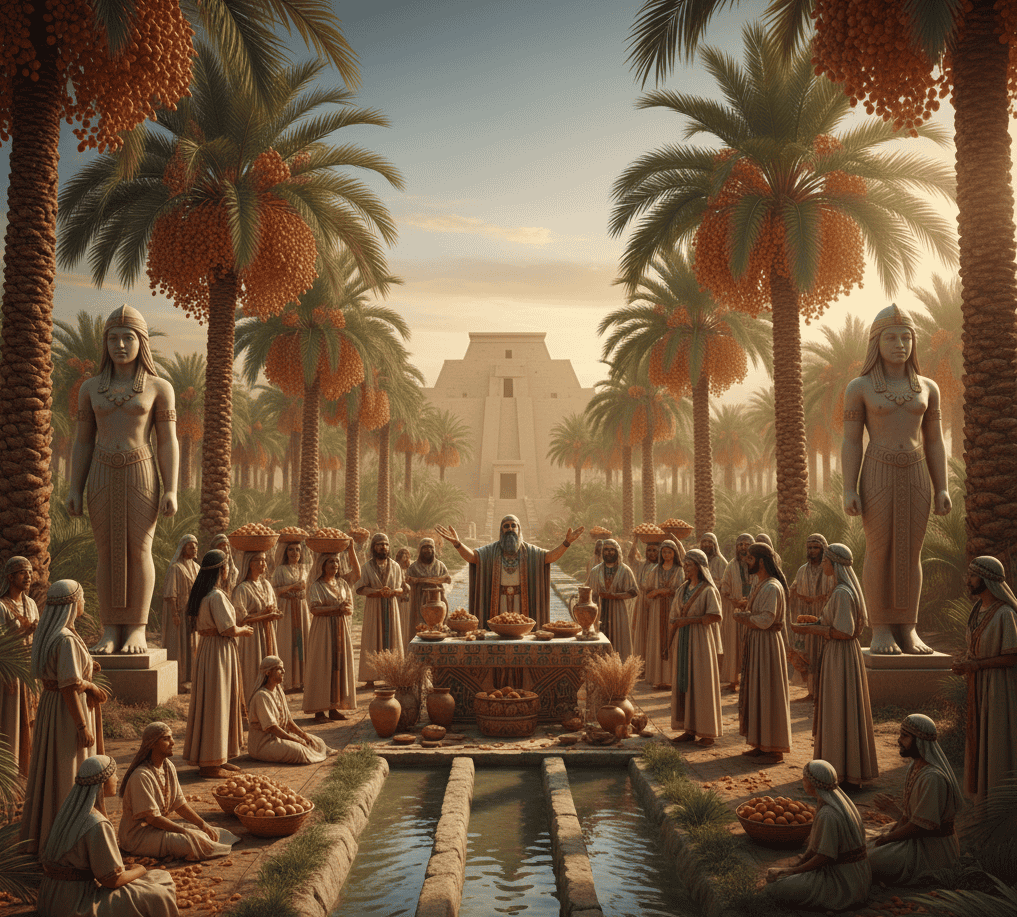When you walk into a forest today, the air is cool, the ground soft, and the trees seem to stretch endlessly above you.
For ancient civilizations, stepping into a grove of trees was not just about shade or timber.
Groves were seen as living temples, places where the human world brushed against the divine.
No marble columns were needed because the trees themselves were the pillars of sacred space.
In many myths and rituals, entire groves became holy ground, each with a unique purpose.
Let’s wander through ten of these legendary groves and uncover the mystical roles they played in shaping culture and spirituality.
1. The Oak Groves of the Druids
For the ancient Celts, oak groves were the heart of spirituality. The oak was seen as the king of trees, strong, enduring, and deeply rooted in the land.
Druid priests often gathered in oak groves to perform ceremonies, believing that the trees themselves carried messages from the gods.
Mistletoe growing on oak branches was thought to hold magical power, used in healing and rituals of protection.
Imagine standing in such a grove. The tall oaks whisper in the wind, and the priests in white robes gather in silence.
They see the grove as a cathedral without walls, a place where nature itself opens a doorway to higher knowledge.
The oak grove was a space of wisdom and continuity, grounding people in both earth and sky.
2. The Grove of Artemis at Brauron
In ancient Greece, sacred groves were often dedicated to individual gods or goddesses. One of the most famous was the grove of Artemis at Brauron, near Athens.
Artemis, goddess of the hunt and protector of young girls, was honored there with rituals that blended the wildness of the forest with the tender care of the community.
Girls would participate in rites called the “Arkteia,” where they dressed as bears and danced among the trees, symbolizing both innocence and transformation.
The grove became a place where childhood gave way to adulthood under the watchful eyes of Artemis.
It was not just about religion but also about life’s transitions, with the grove acting as the stage for these important rites of passage.
3. The Ash Groves of Norse Myth
In Norse tradition, ash trees held cosmic importance, with Yggdrasil, the great world tree, imagined as an ash.
But beyond the myth of Yggdrasil, actual ash groves were seen as places where humans could commune with spirits and gods.
The groves represented protection and resilience in a world often marked by harsh winters and fierce battles.
Standing in an ash grove was like standing at the crossroads of worlds. Each tree echoed the strength of Yggdrasil, reminding people of their place in the grand web of existence.
Warriors sought blessings there before setting off to war, while families prayed for fertility and good harvests. The ash grove was both shield and guide, helping people face the struggles of their world with courage.
4. The Olive Groves of Athena in Athens
Few groves carried as much civic pride as the olive groves dedicated to Athena in Athens. According to myth, Athena gifted the first olive tree to the city as a sign of her protection and wisdom.
From that tree came a whole culture built on olive oil, a vital resource for food, trade, and ritual.
Olive groves around the Acropolis were considered sacred, and harming one was seen as an offense against the goddess herself.
These groves symbolized prosperity and divine favor. They were not wild or chaotic but carefully tended, just as Athena embodied both reason and order.
Every olive tree reminded Athenians of their bond with their goddess and their responsibility to honor her gift.
5. The Cypress Groves of the Underworld
In many Mediterranean myths, cypress trees marked the boundary between life and death.
Their tall, slender shapes were planted in groves near tombs and sacred sites, linking them to mourning and the passage of souls.
Cypress groves were not places of terror but of solemn reflection. For the Greeks, Romans, and even later cultures, the cypress carried a quiet dignity.
Walking through a cypress grove meant remembering ancestors and facing mortality. These groves were not about fear of death but about acknowledging it as part of life’s cycle.
They acted as silent guardians, reminding the living of the continuity between generations.
6. The Laurel Grove of Apollo at Delphi
The Oracle of Delphi is often remembered for its temple, but the surrounding laurel grove was equally important.
Apollo’s connection to the laurel tree came from the myth of Daphne, who transformed into a laurel to escape his pursuit.
Ever after, laurel became Apollo’s sacred plant, and its groves symbolized prophecy and divine truth.
Priests and priestesses used laurel leaves in rituals, and the grove itself was believed to sharpen the mind and spirit.
Victors in games were crowned with laurel wreaths, a tradition tied directly to these sacred groves.
Walking among the laurels at Delphi was not just a stroll in nature. It was stepping into the realm of visions, where gods whispered guidance through the rustle of leaves.
7. The Mango Groves of Ancient India
In India, mango trees have been celebrated for thousands of years, not only as bearers of delicious fruit but as symbols of love and prosperity.
Mango groves were dedicated to gods like Kamadeva, the deity of love, and were often used as backdrops for festivals and rituals of fertility.
The groves carried an atmosphere of joy and abundance. Lovers met beneath the trees, poets sang of the blossoms, and communities gathered to share the fruit.
In mythology, mango groves became places where divine romance unfolded, where gods and goddesses revealed their tender sides.
They were spaces where love, fertility, and divine blessing mingled in the shade of green canopies.
8. The Bo Grove of the Buddha
In Buddhist tradition, groves of fig trees held immense sacred significance, especially the Bodhi tree under which Siddhartha Gautama attained enlightenment.
Over time, groves of Bodhi or “Bo” trees became places of meditation and spiritual practice across Asia.
The grove was not a site of sacrifice or grand spectacle but of quiet contemplation. People believed that by sitting in the presence of these trees, they too could touch deeper truths.
The Bodhi grove embodied the idea that wisdom does not come from noise and ritual alone but from stillness.
Its mystical role was to remind seekers of the calm strength that comes when you root yourself in silence and awareness.
9. The Palm Groves of Mesopotamia
In the hot lands of Mesopotamia, palm groves were nothing short of miraculous. They provided shade, dates for food, and materials for shelter, but they also carried sacred weight.
Palms symbolized fertility and divine generosity, and whole groves were dedicated to gods like Ishtar and Shamash.
Palm groves became living altars where communities thanked the gods for abundance. In myths, palms were linked to eternal life and renewal, always springing back even in harsh climates.
The palm grove was a meeting of practicality and spirituality, a reminder that divine blessing often arrived in the form of life-giving resources.
10. The Sacred Groves of Yoruba Tradition
In West Africa, Yoruba culture preserved sacred groves that served as the dwelling places of powerful orishas, or divine spirits.
The most famous is the Osun-Osogbo Sacred Grove in Nigeria, dedicated to Osun, the goddess of love, fertility, and rivers.
Walking through the grove meant stepping into a world alive with shrines, sculptures, and rituals woven into the dense forest.
The grove was not only about nature but about a living relationship with divinity.
People came there seeking blessings, fertility, and healing, believing the goddess herself moved among the trees and rivers.
These groves embodied a balance between humanity and the spiritual forces that guided life.
They were places where respect for the land and reverence for the divine became the same.

自出生以来,我一直感觉到自己与神灵有着紧密的联系。作为一名作家和导师,我的使命是帮助他人在最黑暗的时刻找到爱、幸福和内心的力量。


